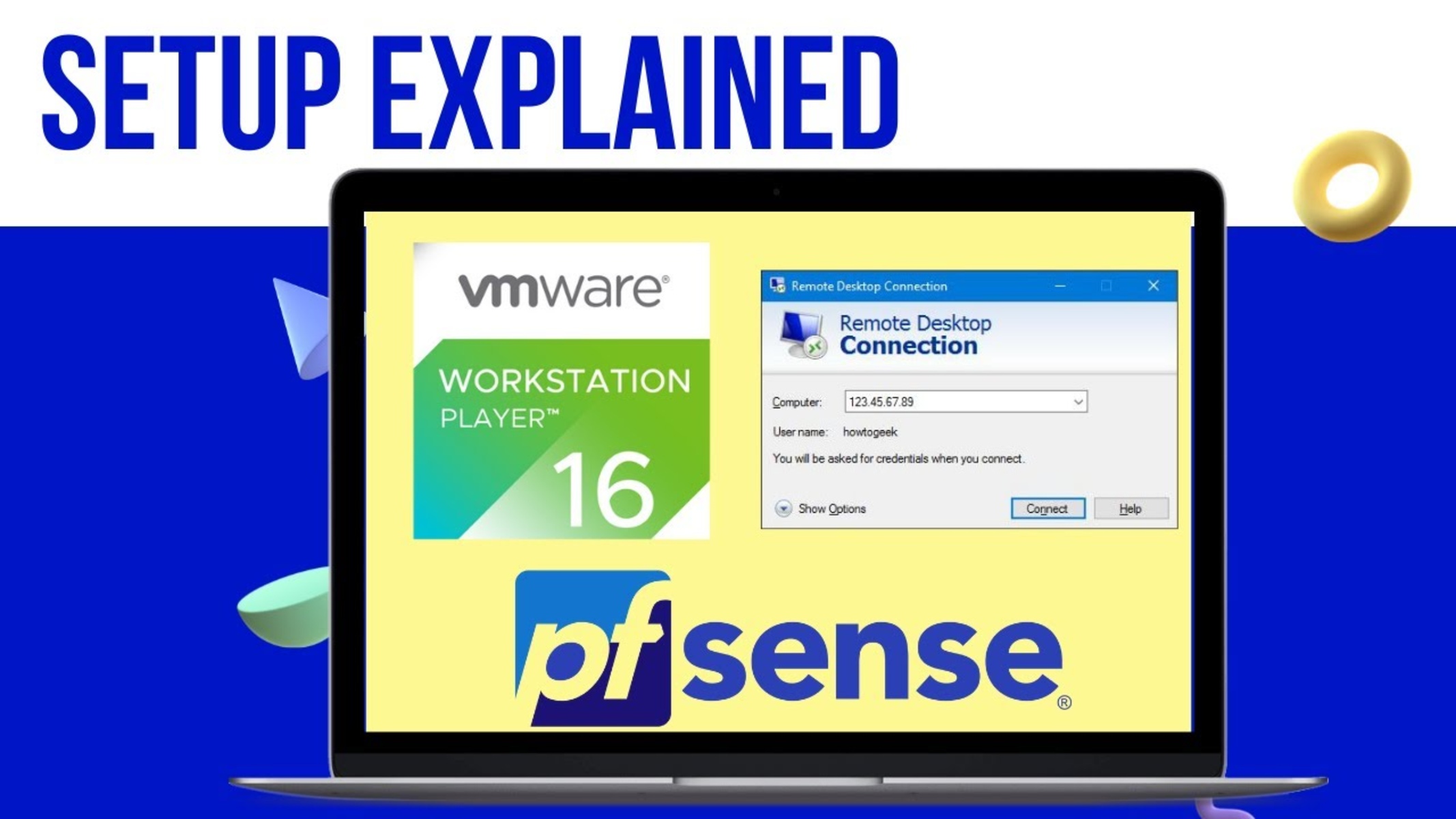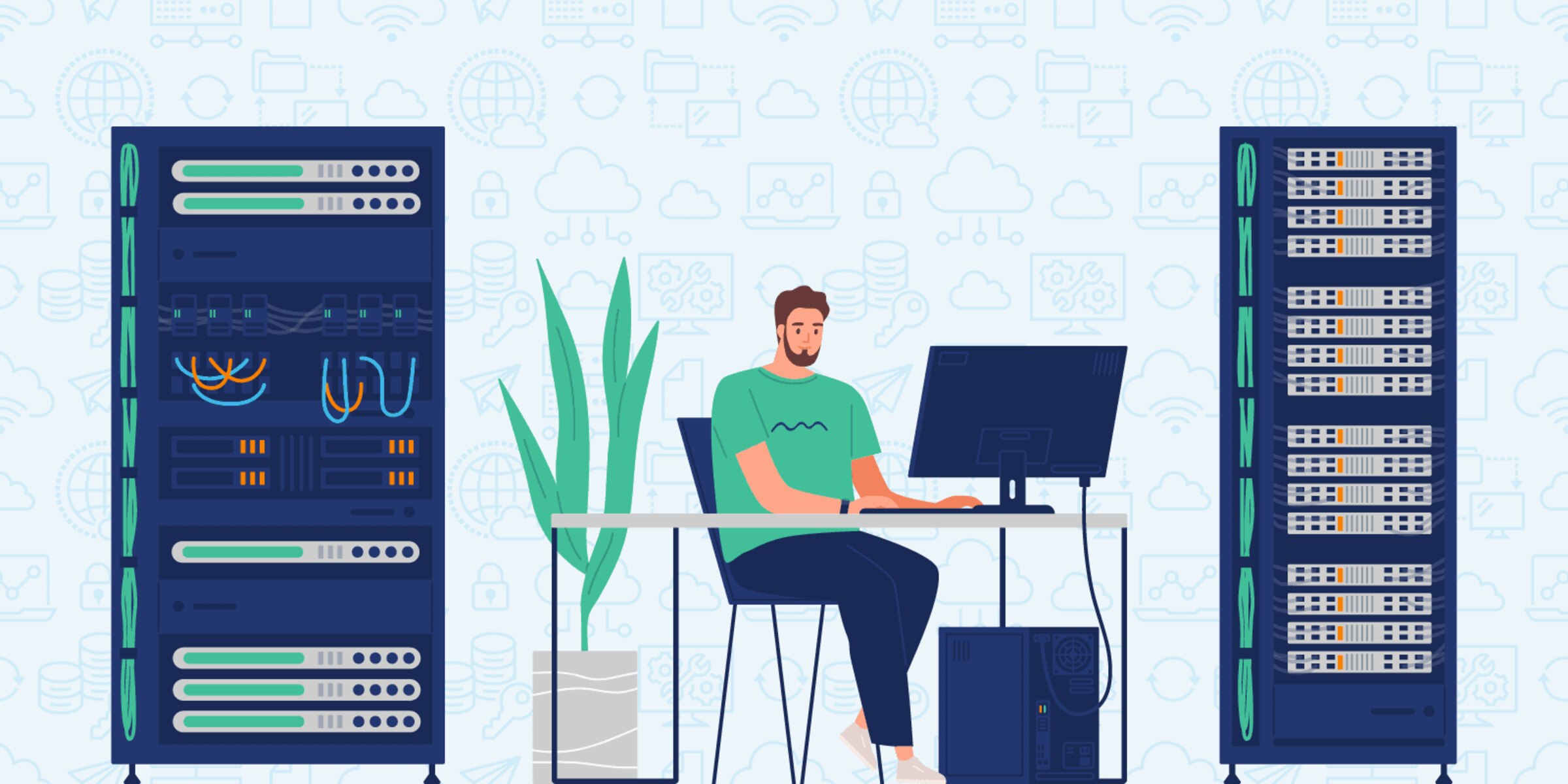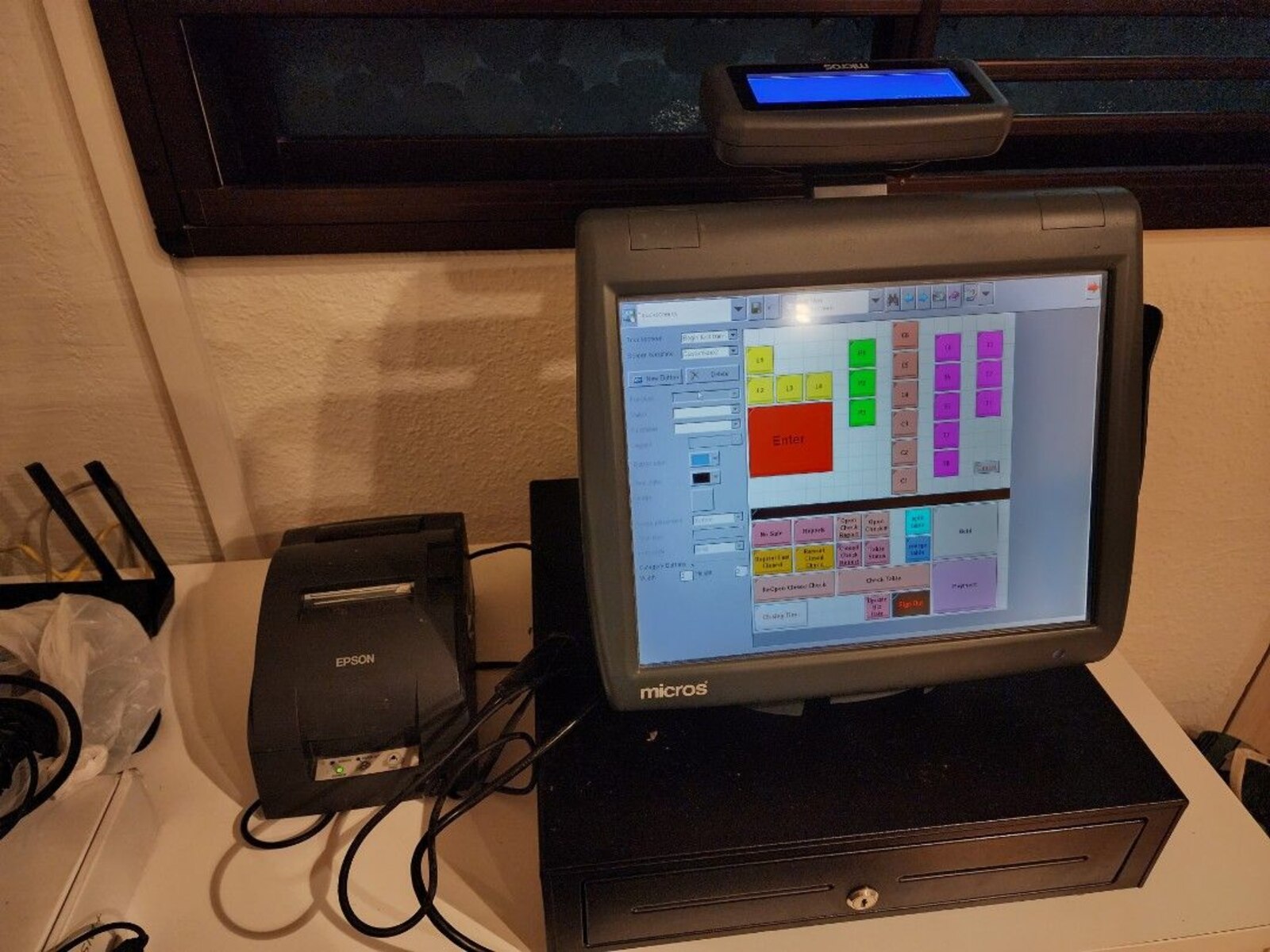Introduction
Welcome to the beginner’s guide on how to configure a second UPS workstation. In today’s digital age, power interruptions can cause major disruptions to our work and productivity. Uninterruptible Power Supply (UPS) devices act as a safeguard, providing a backup power source in case of outages or fluctuations in the main power supply. While a single UPS device can protect a single workstation, it is often beneficial to have a second UPS workstation for added redundancy and protection.
Having a second UPS workstation ensures that even if one device fails or undergoes maintenance, the other workstation can continue to operate without any interruptions. Additionally, having multiple UPS devices helps distribute the load and provides better power management across multiple workstations.
In this guide, we will walk you through the step-by-step process of configuring a second UPS workstation. You will learn how to determine power requirements, choose the appropriate UPS device, set up the workstation, connect the UPS to the workstation, configure the UPS settings, and finally, test the UPS functionality.
By following this guide, you will be equipped with the knowledge and skills to effectively configure a second UPS workstation, ensuring uninterrupted power supply and protecting your work from unexpected power disruptions. Let’s get started with the first step: determining the power requirements.
Step 1: Determine the Power Requirements
Before setting up a second UPS workstation, it is crucial to determine the power requirements of the workstation to ensure the UPS device can adequately support it. The power requirements will depend on the equipment connected to the workstation, such as the computer, monitors, printers, and any other peripherals.
To determine the power requirements, you can follow these steps:
- Make a list: Start by making a list of all the equipment that will be connected to the second UPS workstation. Include the wattage or power rating of each device, which can usually be found on the product label or in the user manual.
- Calculate power consumption: Add up the power consumption of all the devices to determine the total wattage required. Be sure to account for any future upgrades or additions to the workstation.
- Consider efficiency: Keep in mind that UPS devices operate with efficiency ratings. The actual power output of the UPS may vary, so it is recommended to add a buffer of around 20% to the total wattage to ensure the UPS can handle the load.
Once you have determined the power requirements, you can use this information to choose an appropriate UPS device for your workstation. It is important to select a UPS that can handle the total power consumption comfortably, while also providing sufficient backup time in case of power outages.
In the next section, we will discuss how to choose the right UPS device for your second workstation. By understanding the power requirements, you are taking a crucial step towards setting up a reliable and efficient UPS workstation.
Step 2: Choose the UPS Device
Once you have determined the power requirements for your second UPS workstation, the next step is to choose the appropriate UPS device. When selecting a UPS, there are a few key factors to consider:
1. Power Capacity: The UPS device you choose should have a power capacity that can handle the total wattage requirements of your workstation. It is recommended to choose a UPS with a capacity slightly higher than the calculated power consumption to allow for future expansion or additional devices.
2. Battery Runtime: The battery runtime of the UPS is crucial in providing backup power during outages. Consider the length of time you need the UPS to keep your workstation running when there is no main power supply. Look for a UPS with an adequate battery runtime that can support the devices connected to your workstation.
3. Surge Protection: UPS devices also offer surge protection, which safeguards your equipment from sudden voltage spikes or power surges. Ensure that the UPS you choose offers sufficient surge protection to prevent damage to your devices.
4. Outlets and Connectivity: Check the number and type of outlets provided by the UPS to ensure they are compatible with your workstation devices. Consider the type of connectivity options, such as USB or network ports, for easy monitoring and management of the UPS.
5. Brand Reputation: Research different UPS brands and read reviews to gauge their reliability and performance. Choose a reputable brand that has a good track record in providing reliable UPS devices.
By considering these factors, you can choose a UPS device that meets your power requirements and provides the necessary backup and protection for your second workstation. Once you have selected the UPS device, you can proceed with setting up the second UPS workstation, which we will discuss in the next section.
Step 3: Set Up the UPS Workstation
With the UPS device chosen, it’s time to set up the UPS workstation. Follow these steps to ensure a smooth and efficient setup process:
1. Choose a suitable location: Select a dedicated space for the UPS device and workstation. It should be well-ventilated and away from direct sunlight or extreme temperatures.
2. Unpack the UPS device: Carefully unpack the UPS and its accessories. Ensure that all the components are present and in good condition.
3. Connect the battery: Connect the battery to the UPS device. Follow the manufacturer’s instructions to ensure a proper connection.
4. Connect the power cord: Plug one end of the power cord into the UPS device and the other end into a reliable power outlet.
5. Connect the devices: Connect your workstation devices, such as the computer, monitor, printer, and any other peripherals, to the outlets on the UPS device. Make sure to use surge-protected outlets for maximum safety.
6. Organize the cables: Arrange the cables neatly and use cable management solutions to avoid tangling or tripping hazards.
7. Turn on the UPS: Power on the UPS device and ensure that the connected devices are receiving power.
8. Perform a self-test: Most UPS devices have a self-test feature. Initiate a self-test to ensure the UPS is functioning properly and providing the expected backup power.
By following these steps, you can effectively set up the UPS workstation, creating a reliable backup power system for your second workstation. In the next section, we will discuss how to connect the UPS device to the workstation for seamless power management.
Step 4: Connect the UPS to the Workstation
Now that the UPS workstation is set up, the next step is to connect the UPS device to the workstation. Follow these steps to ensure a proper and secure connection:
1. Check the UPS outlets: Examine the outlets on the UPS device and ensure they match the power requirements of your workstation devices. Verify that the outlets are compatible with the plugs and connectors of your equipment.
2. Use appropriate cables: Use high-quality power cables and data cables to connect the UPS device to your workstation devices. Ensure that the cables have the correct connectors and are compatible with the devices being connected.
3. Establish proper routing: Plan the routing of the cables to ensure a clean and organized setup. Avoid crossing power cables with data cables to minimize interference and maintain optimal performance.
4. Connect the power cables: Plug the power cables of your workstation devices into the appropriate outlets on the UPS device. Ensure a secure connection by firmly pushing the plugs into the outlets.
5. Connect the data cables: If applicable, connect the data cables, such as USB or Ethernet cables, from the UPS device to your computer or network. This allows for remote monitoring and management of the UPS system.
6. Secure the cables: Use cable ties or clips to secure the cables and prevent them from becoming tangled or accidentally dislodged. This helps maintain a neat and organized workspace.
7. Check the LED indicators: Monitor the LED indicators on the UPS device to ensure that it is receiving power and functioning correctly. Refer to the user manual for specific instructions on interpreting the LED indicators.
8. Test the connection: Power on your workstation devices and verify that they are receiving power from the UPS device. Test the functionality of the connected devices to ensure they are operating as expected.
By following these steps, you can successfully connect the UPS device to your workstation, providing reliable power backup and protection. In the next section, we will discuss how to configure the UPS settings for optimal performance.
Step 5: Configure the UPS Settings
Configuring the settings of your UPS device is crucial to ensure optimal performance and customization based on your specific needs. Follow these steps to configure the UPS settings:
1. Read the user manual: Familiarize yourself with the user manual provided by the UPS manufacturer. It will contain detailed instructions on accessing and configuring the settings of your specific UPS model.
2. Access the configuration interface: Most UPS devices have a configuration interface that can be accessed either through a built-in display panel or via software installed on your computer. Refer to the user manual to determine the method for accessing the configuration interface.
3. Set input power preferences: Configure the input power preferences, such as the voltage range and sensitivity level, based on the power supply in your area. This ensures that the UPS adapts and provides proper voltage regulation to your connected devices.
4. Configure battery settings: Adjust the battery settings to optimize the battery runtime. You may have options to set the low battery warning level, shutdown thresholds, and other battery-related preferences. Customize these settings based on the needs of your workstation.
5. Set up notifications: Configure the UPS device to send notifications in case of power outages, low battery, or other critical events. This can be done through email alerts, SMS notifications, or integration with monitoring software.
6. Monitor power consumption: Some UPS devices provide insights into power consumption by individual devices or the overall load on the UPS. Monitor these metrics to identify any power-hungry devices and optimize your power usage.
7. Consider scheduled shutdowns: If desired, set up scheduled shutdowns for your workstation devices during periods of extended inactivity. This helps conserve battery power and ensures a controlled shutdown in case of a prolonged power outage.
8. Save the configuration: After making the desired changes, save the UPS settings to ensure they are applied and retained even during power interruptions or device restarts.
By following these steps, you can configure your UPS settings to match your specific power needs and maximize the performance and efficiency of your workstation. In the next section, we will discuss how to test the functionality of the UPS system to ensure it is working as intended.
Step 6: Test the UPS Functionality
Once you have configured the UPS settings, it is important to test the functionality of the UPS system to ensure that it is working as intended. Follow these steps to perform a comprehensive UPS functionality test:
1. Ensure a charged battery: Make sure that the UPS battery is fully charged before conducting the test. This ensures that the UPS is capable of providing backup power during an outage.
2. Simulate a power outage: Safely disconnect the main power supply to simulate a power outage. This can be done by unplugging the UPS from the wall outlet or by turning off the power supply to your entire workspace.
3. Monitor response time: Observe how quickly the UPS switches from the main power supply to the backup power source. Ideally, this transition should be seamless and instantaneous.
4. Check battery runtime: Monitor the duration for which the UPS is able to provide power to your workstation devices. Ensure that it meets your expectations and allows for a safe shutdown or continued operation during a power outage.
5. Verify device functionality: Test the functionality of your workstation devices to ensure they continue to operate without any disruption when powered by the UPS. Verify that all connected devices are functioning as expected.
6. Recharge the battery: After completing the test, recharge the UPS battery to its full capacity. This ensures that the UPS is ready to provide backup power in case of future power outages.
7. Repeat the test periodically: To maintain the reliability of the UPS system, it is recommended to repeat this functionality test periodically. This will help identify any issues or limitations and ensure that the UPS continues to provide reliable backup power.
By conducting regular UPS functionality tests, you can have confidence in the reliability of your backup power system. This ensures that your workstation devices remain protected and operational in the event of a power outage. In the subsequent section, we will conclude the guide on configuring a second UPS workstation.
Conclusion
Configuring a second UPS workstation is a smart and proactive approach to ensure uninterrupted power supply and protect your valuable work from unexpected power disruptions. In this guide, we discussed the step-by-step process of setting up a second UPS workstation, including determining the power requirements, choosing the appropriate UPS device, setting up the workstation, connecting the UPS to the workstation, configuring the UPS settings, and testing the UPS functionality.
By following these steps, you can create a reliable and efficient backup power system for your second workstation. Understanding the power requirements of your equipment, selecting the right UPS device, and properly connecting and configuring the UPS are vital for optimal performance. Regularly testing the UPS functionality helps ensure that it will function as intended in case of a power outage.
Remember to refer to the user manual provided by the UPS manufacturer for specific instructions tailored to your UPS model. Additionally, if you encounter any difficulties during the setup or configuration process, do not hesitate to seek assistance from the manufacturer’s customer support.
Having a second UPS workstation not only provides additional protection and redundancy but also contributes to maintaining productivity by minimizing downtime caused by power interruptions. Take the necessary steps to safeguard your work environment and equipment from power-related challenges by configuring a second UPS workstation today.

























